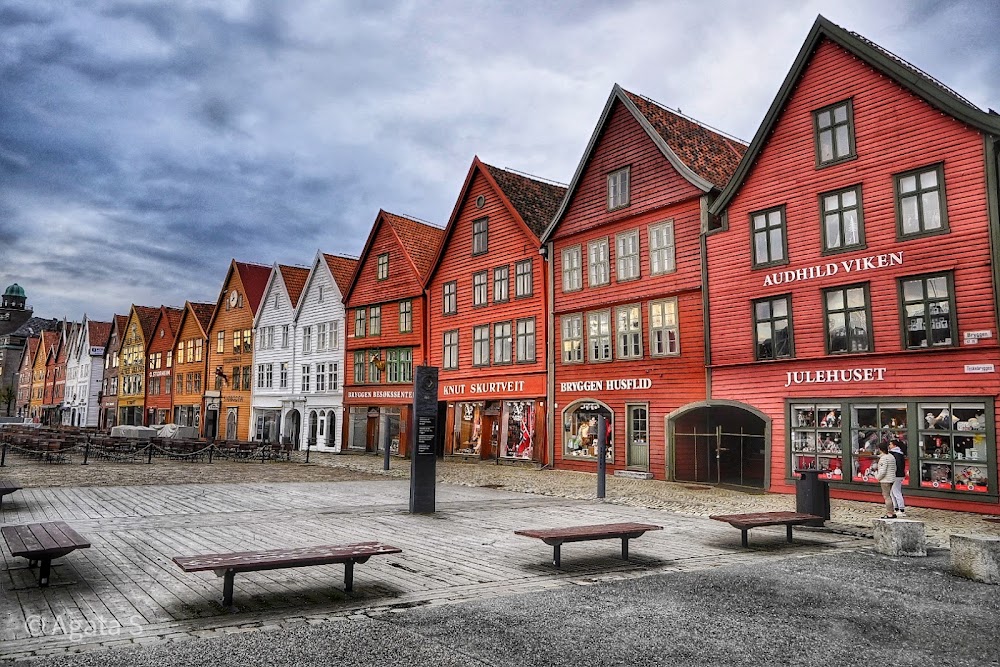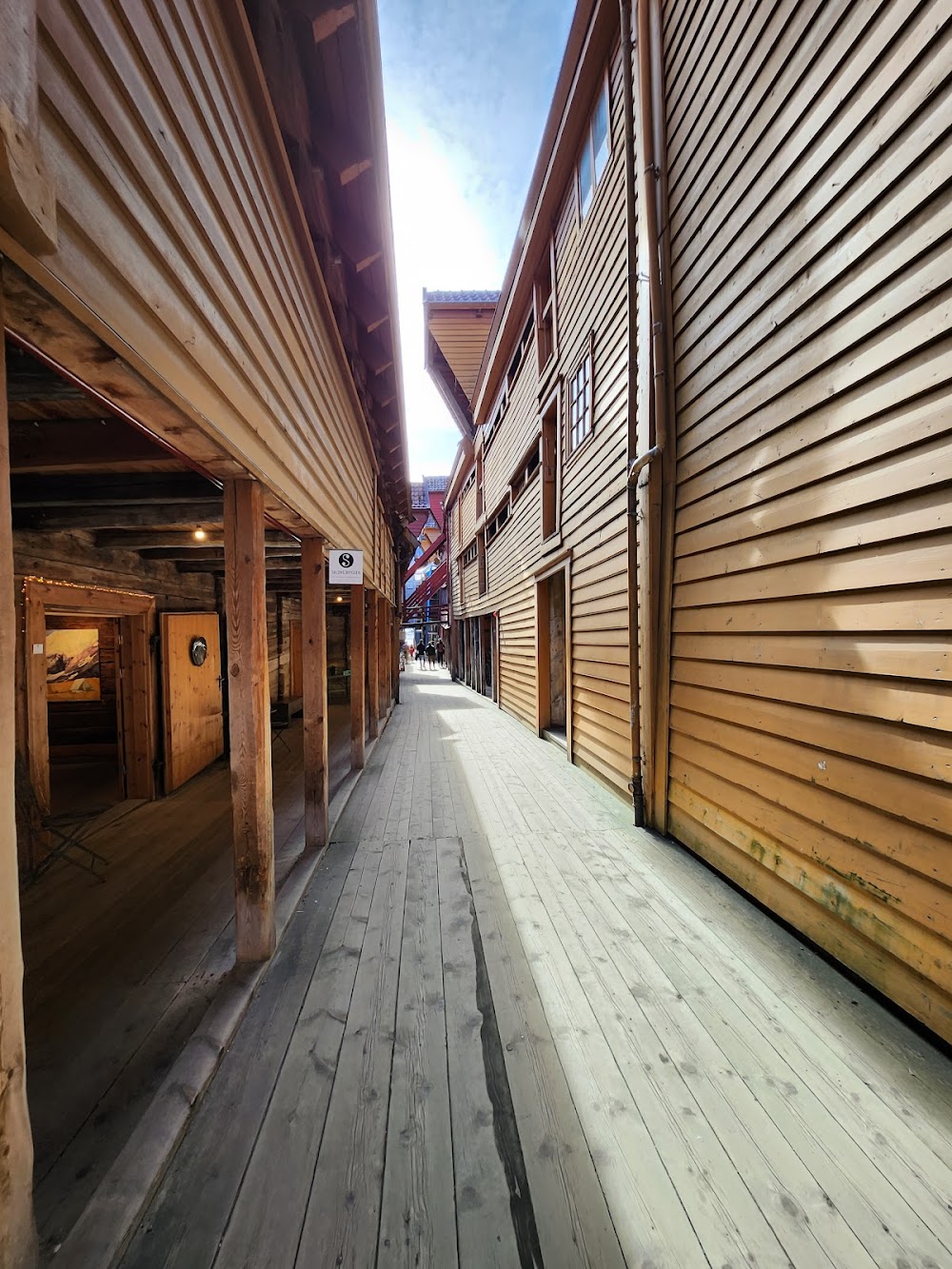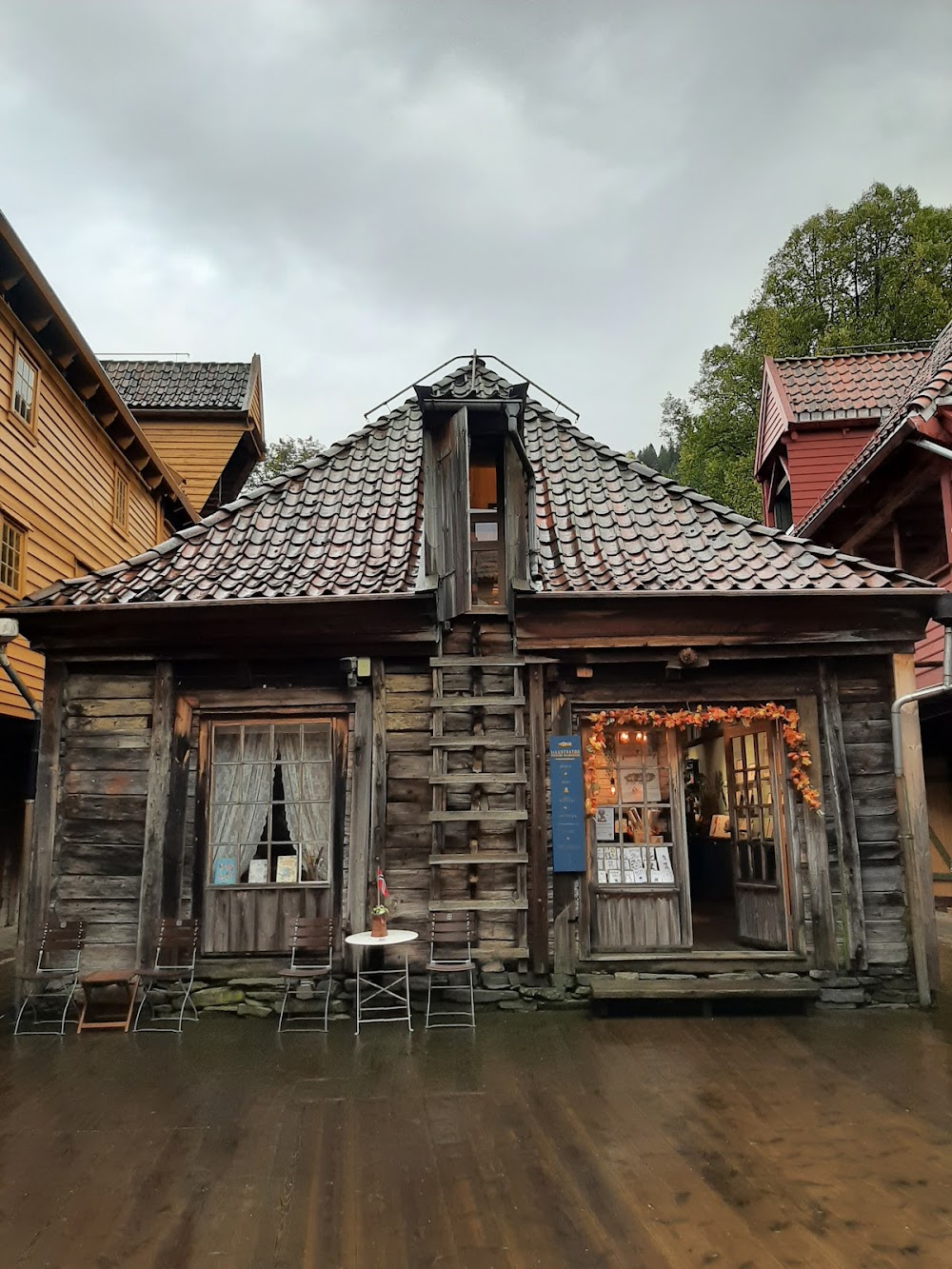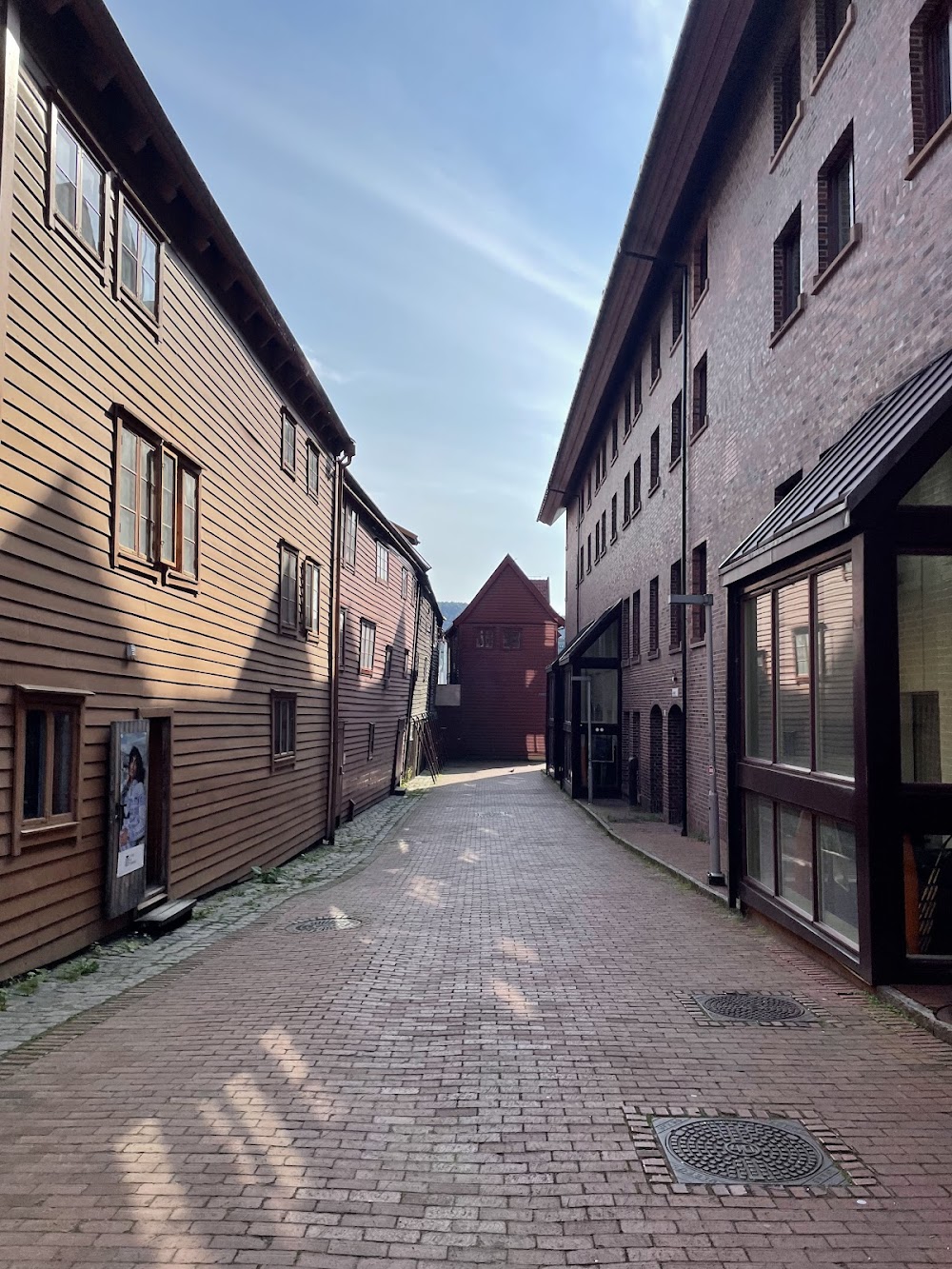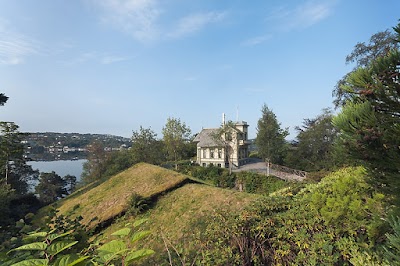Bryggen (Bryggen)
Related Places
Overview
Bryggen, nestled in the heart of Bergen, Vestland, Norway, is a historic wharf that beautifully narrates the story of a vibrant merchant town. Established in 1070, shortly after King Olav Kyrre founded Bergen, Bryggen rapidly evolved into a major trading hub thanks to its exceptional harbor, ideally suited for sailing ships traversing the North Sea.
Architectural Resilience
The eye-catching, colorful wooden buildings that stand today are painstaking re-creations of the original structures, rebuilt meticulously after numerous fires that have swept through the area. The first significant fire occurred in 1343, marking the beginning of a series of devastating blazes, the most catastrophic of which took place in 1702. Yet, with each disaster, Bryggen has risen anew, preserving its traditional architectural style.
The unique architecture of Bryggen is characterized by its wooden framework, where timber plays a vital role. Builders employed medieval construction techniques, using interlocking notched logs that fit together without nails. This method not only ensured sturdiness but also provided flexibility, essential for withstanding the harsh coastal weather and the challenges of repeated reconstruction.
The Hanseatic League’s Influence
In the mid-14th century, Bryggen became the site of the Hansekontor, the office of the Hanseatic League, a powerful confederation of merchant guilds and market towns in Northwestern and Central Europe. This League dominated maritime trade across the North and Baltic seas, positioning Bryggen as a pivotal center for commerce, particularly in the export of stockfish from Norway to the European mainland.
The presence of Hanseatic merchants left an indelible mark on Bryggen, introducing their building styles, customs, and governance. For nearly 400 years, German merchants thrived in Bryggen, contributing to a rich cultural mélange. The influence is still visible today in the long, narrow wooden houses, designed for efficient storage of goods.
Modern-Day Bryggen
Following the decline of the Hanseatic League, Bryggen continued to function as Bergen’s commercial nucleus. The area adapted to changing trading patterns and technologies while steadfastly preserving its historical essence. Today, Bryggen is not merely a relic but a vibrant part of Bergen’s identity, where iconic colorful buildings now house shops, restaurants, museums, and artist studios, seamlessly blending history with modern life.
In 1979, Bryggen was designated a UNESCO World Heritage Site in recognition of its cultural and historical significance. Ongoing efforts to preserve and restore the site include using traditional conservation techniques to maintain the authenticity of its wooden structures, ensuring that Bryggen remains a window into Norway’s medieval past.
Exploring Bryggen
Visitors to Bryggen can wander through narrow alleyways and discover hidden courtyards, experiencing the atmosphere that once thrived with the activities of merchants. The Bryggens Museum, located on-site, offers a wealth of artifacts and exhibitions that delve deeper into the rich history of the area.
Walking through Bryggen feels like stepping back in time, yet the area is alive with energy, epitomizing its resilience and enduring charm. It serves as a bridge between past and present, encapsulating the spirit of Bergen and the legacy of its seafaring heritage.
Bryggen is more than just a historical site; it symbolizes renewal and continuity, reflecting the robust spirit of its community and the timeless allure of its storied buildings.


